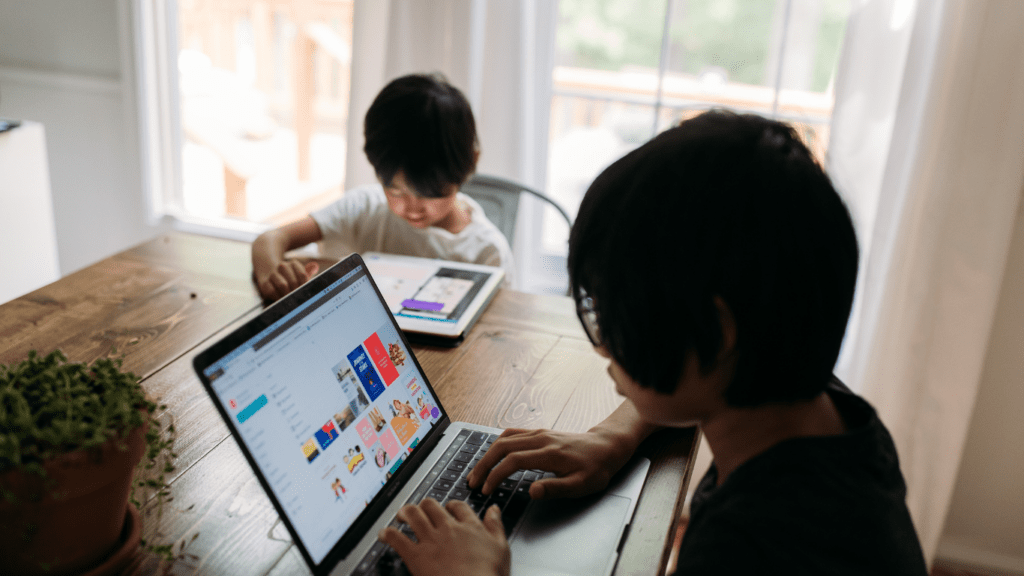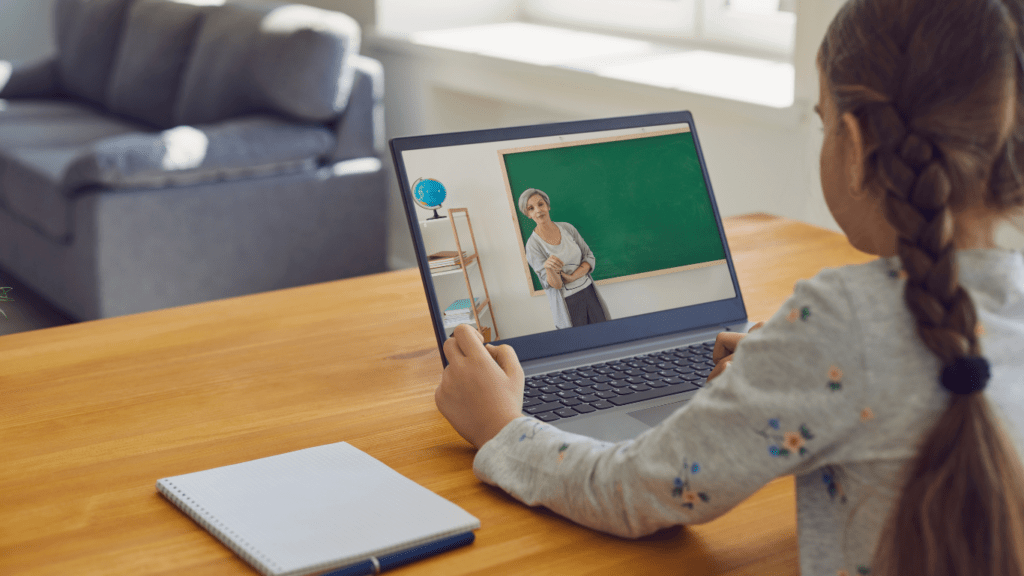The Evolution of Education Trends
Education trends have transformed considerably over the past decade. Remote learning platforms and digital classrooms have reshaped traditional schooling methods. Online resources, like Khan Academy and Coursera, offer diverse courses, making knowledge more accessible.
Educational technology (EdTech) has played a crucial role in this evolution. Tools such as:
- interactive whiteboards
- virtual reality (VR) simulations
- artificial intelligence (AI)
tutors enhance engagement and personalization. These innovations have introduced adaptive learning systems that cater to individual student needs and learning paces.
Homeschooling and hybrid learning models have gained popularity as they provide flexibility and accommodate various learning styles. My children benefit from customized curriculums that blend online lessons with hands-on activities. This approach tailors education to their interests and strengths, fostering a more profound love for learning.
Moms are increasingly using mobile apps for educational purposes. Applications like Duolingo for language learning and Google Classroom for assignments and collaboration have become essential. These tools enable continuous learning outside traditional settings, bridging gaps in conventional education systems.
Collaborative learning is another trend shaping modern education. Platforms like Zoom and Microsoft Teams allow students to work together on projects, regardless of geographical location. My children collaborate with peers worldwide, learning valuable skills like teamwork and digital communication.
Social-emotional learning (SEL) is gaining focus. Programs that integrate SEL into the curriculum help children develop self-awareness, empathy, and relationship skills. Schools and online courses emphasizing SEL prepare my kids to navigate emotional landscapes effectively, crucial for their overall development.
Microlearning, delivering content in bite-sized chunks, is also on the rise. Platforms like Quizlet and Khan Academy simplify complex subjects into manageable lessons. This method proves effective for my children, allowing them to master topics through focused, short learning sessions.
The Role of Moms in Adapting to New Learning Models
Moms play a critical role in navigating new learning models. They support their children by utilizing various strategies and tools to ensure effective education.
Supporting Remote Learning
Moms embrace technology to make remote learning successful. They set up dedicated study spaces, manage schedules, and ensure consistent internet access. Many use digital platforms like Google Classroom for assignments and Zoom for virtual classes, ensuring children stay on track.
Embracing Hybrid Education Models
In hybrid education models, moms balance between in-person and online learning environments. They coordinate with teachers to align on homework and project deadlines. Using apps like ClassDojo and Seesaw, moms track progress and communicate with educators. This approach ensures children receive a well-rounded education.
Leveraging Technology in Education

Technology has become integral to modern education. Moms, including myself, are leveraging various tech tools to enhance our children’s learning experiences.
Educational Apps and Tools
Educational apps offer diverse resources. Apps like Duolingo support language learning, while Google Classroom manages assignments efficiently. Khan Academy provides a plethora of subjects with interactive exercises. Using these tools, I can help tailor educational content to my child’s needs, ensuring targeted learning. For younger children, ABCmouse offers engaging activities that build foundational skills in reading and math. These apps not only make learning fun but also allow for educational progress tracking.
Online Learning Platforms
- Online learning platforms have transformed traditional education.
- Platforms like Coursera and Khan Academy offer courses from world-renowned universities and organizations that are accessible from home.
- Through these resources, I can supplement formal education with advanced topics and skill development.
- Tools like Zoom and Microsoft Teams facilitate real-time interaction with teachers and classmates, making virtual learning collaborative and engaging.
- Learning Management Systems (LMS) like Canvas and Blackboard help in organizing coursework and monitoring academic progress.
These platforms support a more flexible and personalized learning experience, accommodating different learning styles and paces.
Overcoming Challenges Faced by Moms
Navigating new learning models presents several challenges for moms. Adapting to these changes involves mastering time management, balancing work, and homeschooling effectively.
Time Management and Scheduling
Efficiently managing time and creating schedules is key. I found that breaking the day into manageable chunks helped. Using tools like Google Calendar ensures that both learning activities and household tasks get time. Setting specific hours for schoolwork, breaks, and extracurricular activities provides structure. Prioritizing tasks, with a focus on high-impact activities, also optimizes time use.
Balancing Work and Homeschooling
Balancing work responsibilities with homeschooling requires strategic planning. Flexible work hours can help manage both duties. I’ve used quiet time for meetings and leveraged nap times for focused work periods. Digital tools like Trello for task management and Slack for communication facilitate coordination between work and home responsibilities. Engaging in co-working sessions with my child can also be productive, allowing us to work side-by-side in a focused manner.
Success Stories: Moms Making a Difference
Moms everywhere are taking proactive steps to adapt and excel in the ever-changing educational landscape. Their innovative approaches and community efforts are making a tangible difference in children’s learning experiences.
Innovative Approaches to Learning
Many moms are leveraging creative strategies to enhance their children’s education. For example, one mom created a custom science curriculum utilizing household items for experiments. By incorporating hands-on learning, she made abstract concepts more accessible. Another used game-based learning with platforms like Kahoot! and Minecraft Education to foster engagement and critical thinking skills. These approaches show that with a bit of creativity, learning can be both effective and enjoyable.
Community Building and Support Networks
Moms are also building strong support networks to share resources and strategies. In online forums and local groups, they exchange advice on everything from time management to tech tools. One mom organized a virtual study group where parents share lesson plans and tutoring schedules. Another initiated a neighborhood co-op to rotate homeschooling duties and provide socialization opportunities for kids. These communities not only bolster moms’ confidence but also enrich their children’s learning experiences through diverse perspectives and collective support.
The Future of Learning: What’s Next?
Today’s education system is rapidly evolving, driven by advancements in technology and changes in societal needs. Emerging learning models like personalized education, virtual classrooms, and competency-based learning are reshaping how children acquire knowledge.
Personalized Education
Personalized education tailors learning experiences to individual needs. Using data analysis and AI, platforms like DreamBox and Smart Sparrow adapt content to suit each child’s learning pace and style. This model promotes deeper understanding and retention, making education more effective for diverse learners. By focusing on each child’s strengths and areas of improvement, personalized education ensures that no student is left behind.
Virtual Classrooms
Virtual classrooms provide flexibility and access to quality education regardless of location. Tools like Zoom, Google Meet, and Microsoft Teams enable interactive learning sessions where students can engage with teachers and peers in real-time. Virtual classrooms break geographical barriers, offering opportunities for global learning and collaboration. This model has become particularly relevant during the COVID-19 pandemic, demonstrating its viability as a long-term educational solution.
Competency-Based Learning
Competency-based learning (CBL) focuses on mastery rather than seat time. Programs like Summit Learning and Western Governors University allow students to progress upon demonstrating proficiency in a subject. This approach equips learners with practical skills and ensures they are ready for real-world challenges. CBL offers flexibility, enabling students to learn at their own pace and emphasizing knowledge application over rote memorization.
EdTech Innovations
Educational technology (EdTech) continues to revolutionize learning experiences. Virtual Reality (VR) and Augmented Reality (AR) tools, such as Google Expeditions and Nearpod, provide immersive learning experiences that enhance understanding and engagement. AI tutors like MATHia and Thinkster Math offer personalized assistance, adapting to each student’s learning needs and providing instant feedback. These innovations make learning more interactive and enjoyable.
Social and Emotional Learning (SEL)
Social and emotional learning (SEL) prepares students for success by developing essential life skills. Programs like Second Step and MindUP integrate SEL into academic curricula, teaching children how to manage emotions, set goals, and establish positive relationships. These skills are crucial for academic and personal growth, fostering well-rounded individuals.
Microlearning
Microlearning delivers content in small, manageable chunks, making learning more accessible. Platforms like Duolingo and Khan Academy utilize this approach, offering brief lessons that can be easily integrated into daily routines. Microlearning enhances retention and accommodates various learning styles, making complex subjects more digestible.
The future of education is dynamic and promising. Continuous innovations adapt learning models to better prepare children for a digital and interconnected world. By embracing these advancements, mothers can support their children’s education more effectively, ensuring they thrive in the ever-changing landscape.




